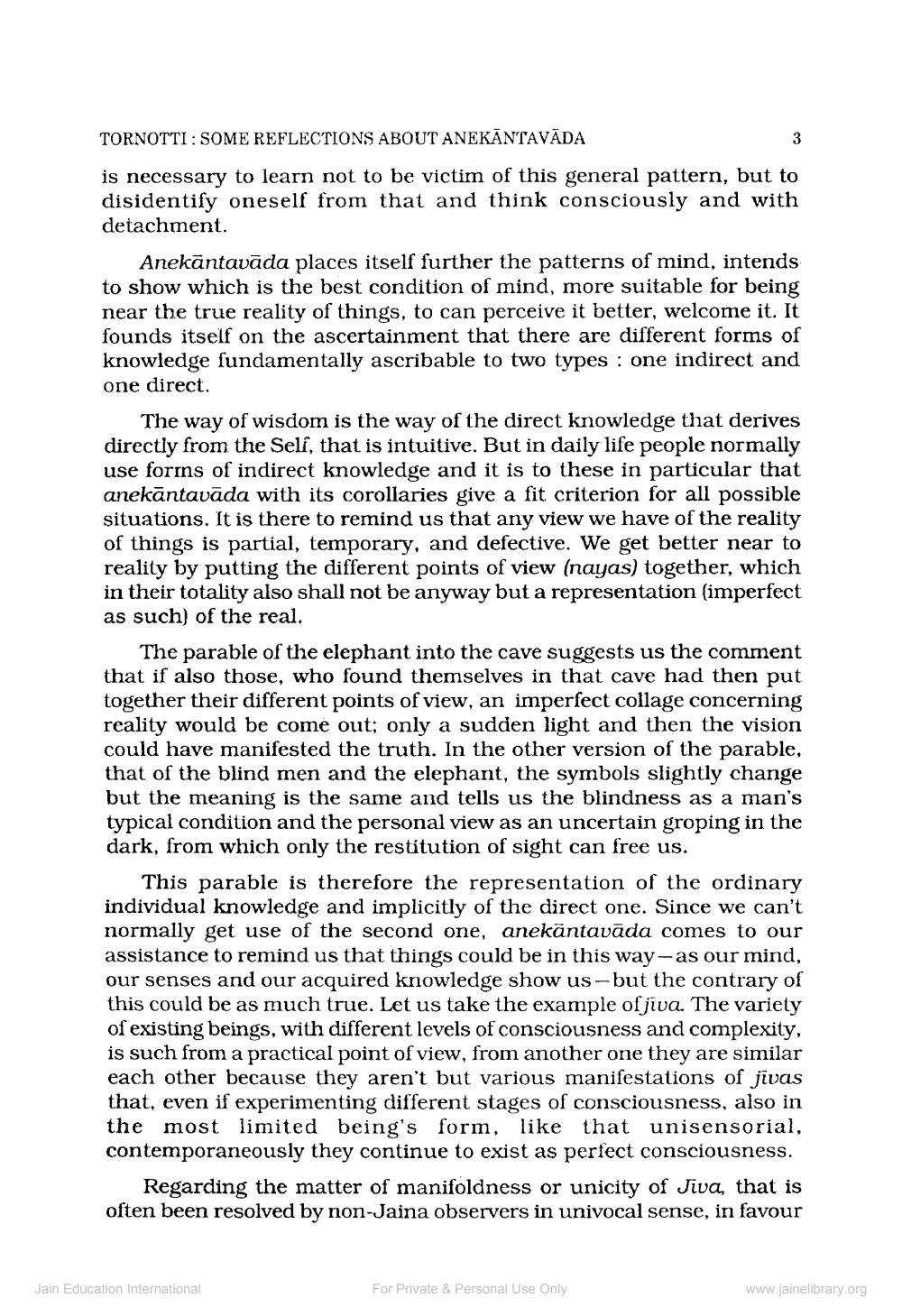Book Title: Jain Journal 2001 07 Author(s): Jain Bhawan Publication Publisher: Jain Bhawan Publication View full book textPage 8
________________ TORNOTTI: SOME REFLECTIONS ABOUT ANEKANTAVĀDA is necessary to learn not to be victim of this general pattern, but to disidentify oneself from that and think consciously and with detachment. Anekāntavāda places itself further the patterns of mind, intends to show which is the best condition of mind, more suitable for being near the true reality of things, to can perceive it better, welcome it. It founds itself on the ascertainment that there are different forms of knowledge fundamentally ascribable to two types: one indirect and one direct. 3 The way of wisdom is the way of the direct knowledge that derives directly from the Self, that is intuitive. But in daily life people normally use forms of indirect knowledge and it is to these in particular that anekāntavāda with its corollaries give a fit criterion for all possible situations. It is there to remind us that any view we have of the reality of things is partial, temporary, and defective. We get better near to reality by putting the different points of view (nayas) together, which in their totality also shall not be anyway but a representation (imperfect as such) of the real. The parable of the elephant into the cave suggests us the comment that if also those, who found themselves in that cave had then put together their different points of view, an imperfect collage concerning reality would be come out; only a sudden light and then the vision could have manifested the truth. In the other version of the parable, that of the blind men and the elephant, the symbols slightly change but the meaning is the same and tells us the blindness as a man's typical condition and the personal view as an uncertain groping in the dark, from which only the restitution of sight can free us. This parable is therefore the representation of the ordinary individual knowledge and implicitly of the direct one. Since we can't normally get use of the second one, anekāntavāda comes to our assistance to remind us that things could be in this way-as our mind, our senses and our acquired knowledge show us-but the contrary of this could be as much true. Let us take the example of jiva. The variety of existing beings, with different levels of consciousness and complexity, is such from a practical point of view, from another one they are similar each other because they aren't but various manifestations of jivas that, even if experimenting different stages of consciousness, also in the most limited being's form, like that unisensorial, contemporaneously they continue to exist as perfect consciousness. Regarding the matter of manifoldness or unicity of Jiva, that is often been resolved by non-Jaina observers in univocal sense, in favour Jain Education International For Private & Personal Use Only www.jainelibrary.orgPage Navigation
1 ... 6 7 8 9 10 11 12 13 14 15 16 17 18 19 20 21 22 23 24 25 26 27 28 29 30 31 32 33 34 35 36 37 38 39 40 41 42 43 44 45 46 47 48 49 50 51 52 53 54 55 56 57 58 59 60 61 62 63 64 65 66 67 68 69 70 71 72 73 74
